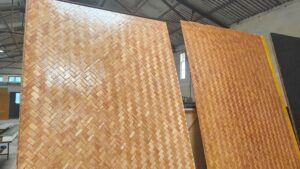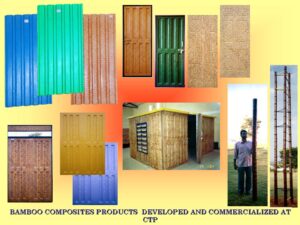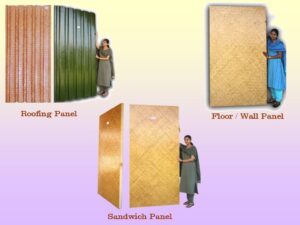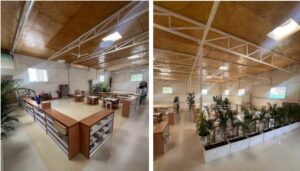When architects and engineers talk about next-generation panels, one standout category is the “Bamboo–Honeycomb–Bamboo Sandwich Panel (10-50 mm)” that combines structural ingenuity with renewable materials. These panels deliver high strength, light weight, durability and sustainability—thanks to advanced bonding and hot-press manufacturing. Below is a detailed overview of the material, its engineering science, properties, applications, pros/cons and frequently asked questions.
What are Bamboo Sandwich Panels?
These sandwich panels consist of two outer skins made of resin-impregnated bamboo laminate, bonded to a core (typically a phenol-treated high-density craft-paper honeycomb core) by high-strength adhesive under high temperature and pressure (hot-press). In the specification list the product is described as: “Bamboo Honeycomb Sandwich Panel – Thickness = 12.5 mm to 50 mm … Natural Bamboo Honeycomb Sandwich panels are bonded by hot press using aerospace spinoff technology.”
For example, the specification shows for the 12.5 mm thickness the volume density ~371 kg/m³ and ~95% weight reduction compared to steel.
For 18.5 mm thickness the density drops further to ~267 kg/m³. The core material (honeycomb) serves to increase overall stiffness and reduce weight, while the bamboo skins provide the structural face layers and durability.
The Engineering Behind the Bonding and Hot-Press Process
Here is how the process and material science come together:
1. Skin/Cover Layers (Bamboo Laminates):
High-quality woven bamboo mats are impregnated with phenol-formaldehyde (PF) resin and hot-cured under heat and pressure to form dense, high-strength skins. These skins act as the face plates of the sandwich panel and provide tensile/compressive strength and surface durability.
2. Honeycomb Core:
A lightweight but high-density honeycomb core (craft-paper or phenol-treated) is used between the skins. The core creates separation between the face sheets, which dramatically increases bending stiffness (much like an I-beam with flanges separated by a web). The large thickness span (10-50 mm) allows good structural depth while keeping weight low.
3. High-Performance Adhesive and Hot Pressing:
The skins and core are bonded using structural adhesive under controlled heat and pressure (hot pressing). The hot-press step cures the resin and adhesive, ensuring a strong bond, minimal voids, high temperature resistance and high performance in demanding conditions (humidity, load, impact). According to the spec, this is an aerospace spinoff technology.
4. Sandwich Structure Mechanics:
In bending, the face skins carry the major tensile/compressive loads, while the core resists shear. The separation (panel thickness) increases moment of inertia, so stiffness goes up significantly without large increase in weight. This is typical sandwich-panel theory.
Because the material is engineered, defects like delamination or core collapse are minimised when the bonding process is high quality.
5. Durability and Resistance:
The resin-impregnated skins and phenol-treated core deliver moisture resistance, termite/fungus proofing, thermal/electrical insulation and impact resistance. The specification lists all these as product benefits.
Key Properties From the Specification
Thickness range: 10 mm to 50 mm (with specific entries at 12.5, 18.5, 25.5, 40, 53.5 mm) for bamboo honeycomb sandwich.
Volume density at various thickness:
12.5 mm → ~371 kg/m³, ~95% weight reduction vs steel.
18.5 mm → ~267 kg/m³, ~96% weight reduction.
25.5 mm → ~213 kg/m³, ~97% weight reduction.
40 mm → ~205 kg/m³, ~97% weight reduction.
53.5 mm → ~171 kg/m³, ~98% weight reduction.
Listed attributes include: light weight, high strength & stiffness, water/moisture resistant, fire retardant, corrosion resistant, thermal/sound insulation, impact resistant, termite proof, non-fungus, eco-friendly.
Standard sheet size: 4′×8′.
Applications
These sandwich panels are ideal for high-performance and demanding applications, including:
Interior decoration, furniture and built-in joinery where light weight, flatness, and premium surface finish matter.
Bulkheads, cabinets, bunk beds, hatch covers for marine, rail, defence, resort-cottage or modular buildings.
Architectural panels, façades or cladding where structural depth, rigidity and lightweight advantage help.
Wherever weight reduction, durability and minimal maintenance are advantages (e.g., prefab modules, transport interiors).
Pros & Limitations
Pros:
Excellent strength-to-weight ratio due to sandwich structure.
Durable surfaces and core: moisture, termite, fungus and corrosion resistant.
Sustainable raw material base (bamboo skins) with state-of-the-art bonding.
Flat, stable panels with good structural depth suitable for premium projects.
Versatile thickness range provides flexibility for many applications.
Limitations / Considerations:
Higher upfront cost than simple wood panels or basic laminated boards due to more complex manufacturing.
Installation and joinery must respect sandwich panel best-practice: edge sealing, support, fixings, substrate.
Finish availability and surface treatment need specification (skins may need coating, veneer or polish).
Fabrication and handling should account for sandwich nature (avoid drilling too near edge, avoid unsupported spans beyond rating).
Recycling/disposal may be more complex than pure wood boards due to resin and honeycomb core.
Frequently Asked Questions (FAQs)
Q: How does the bonding quality affect panel performance?
A: The hot-press bonding under heat and high pressure cures both the resin in skins and the structural adhesive bonding skins to core. Good bonding avoids delamination, ensures load transfer between skins and core, and ensures durability in moisture/humidity environments. Poor bonding can cause core collapse, face skin separation or loss of stiffness.
Q: Is the honeycomb core durable enough for structural use?
A: Yes—when properly manufactured. The core is phenol treated high-density (>70 kg/m³) craft paper honeycomb and matched with strong skins. The specification shows densities as low as 171 kg/m³ at 53.5 mm thickness with very high weight reduction vs steel while retaining structural benefit.
Q: Can the panels be cut, drilled or machined like normal wood boards?
A: Yes, though best practice is required. While the outer skins behave like engineered boards and can be processed, the sandwich structure means edge support and fixings must be selected to avoid core damage. The spec indicates the broader composite boards can be cut/ drilled with conventional woodworking syntax.
Q: Are these panels suitable for outdoor exposure?
A: The material is described as moisture resistant, corrosion resistant and termite proof, and many applications listed include outdoor/resort/building modules. Still, for exterior use you must ensure appropriate finish, weather-proof edge detail and UV protection if required.
Q: What are the environment and sustainability benefits?
A: The use of bamboo as outer skins means renewable raw material; the lightweight nature reduces transport and structural load; long lifespan reduces replacement. The specification emphasises eco-friendly and sustainable manufacture.
Q: What thickness should I choose for a given application?
A: That depends on span, load, panel application and finish requirements. For example, 12.5 mm thickness gives density ~371 kg/m³; thicker panels (25.5-40 mm) give densities ~200-213 kg/m³ but greater stiffness. Selection should be based on structural design and installation context.
Conclusion
High-performance bonding and hot-press manufacturing are what make bamboo sandwich panels a standout material for demanding applications. By combining engineered bamboo skins, strong adhesive bonding, and a honeycomb core, these panels offer architects and engineers a material that bridges performance, sustainability and design. For projects where flatness, durability, weight savings and long service life matter—these panels deliver.






